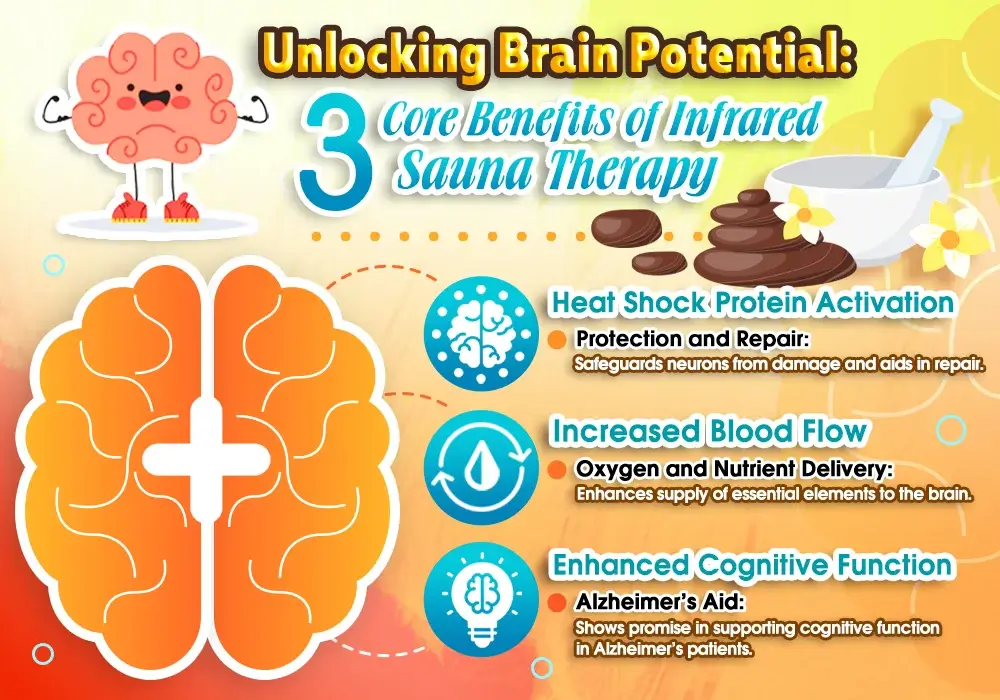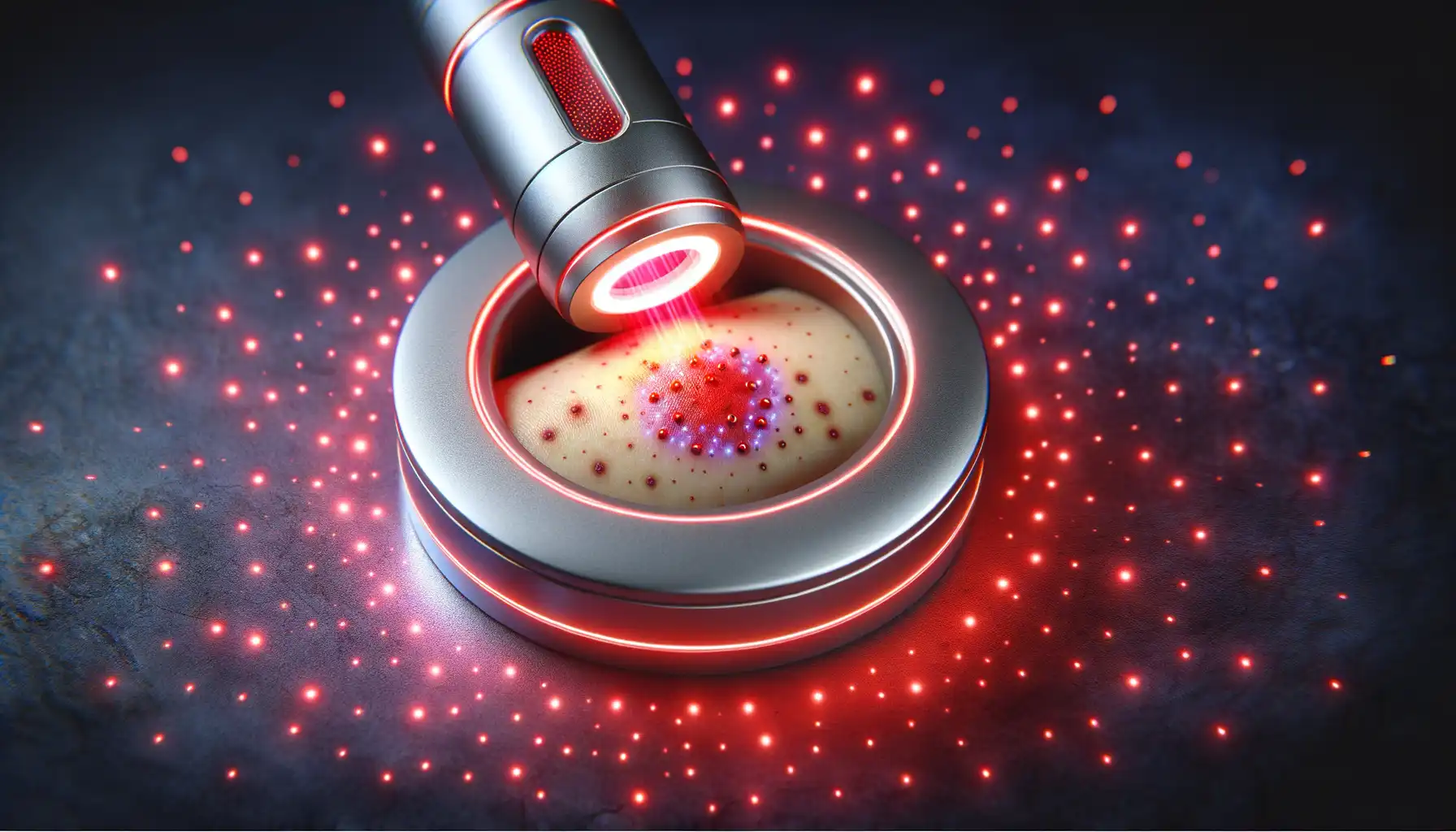We're going to explore the connection between infrared sauna use and brain health. Think of this as your friendly guide to understanding how it works and how you can get started safely.
Here’s a quick look at what we’ll cover:
What Makes infrared saunas Different: Understanding the unique way they heat your body.
The Science of Sauna and the Brain: How heat impacts everything from blood flow to brain-derived neurotrophic factor (BDNF).
Key Brain Health Benefits: Exploring improved mood, focus, memory, and stress reduction.
Getting Started Safely: A practical guide to your first few sessions.
Let's dive in and see how warming up can help power up your brain.
What Is an Infrared Sauna, Anyway?
You've probably heard of traditional saunas—those wood-paneled rooms with hot rocks and steam. They work by heating the air around you to very high temperatures, which in turn heats your body. An infrared sauna takes a different approach.
Instead of heating the air, it uses special lamps that emit infrared light. This light penetrates your skin directly, heating your body from the inside out at a much lower ambient temperature. A typical infrared sauna operates between 120°F and 150°F, while traditional saunas can easily top 180°F.
This makes the experience more comfortable for many people, allowing for longer, more relaxing sessions. But the real magic lies in how this deep-penetrating heat interacts with your body's systems, including the one that matters most for cognitive performance: your brain.
How Infrared Heat Can Support Your Brain
So, how does sitting in a warm room translate to better brain health? The connection isn't just one single thing, but a combination of physiological responses that work together to create a supportive environment for your brain.
It Boosts Cerebral Blood Flow
Your brain is incredibly hungry for oxygen and nutrients, which are delivered by your blood. Anything that improves circulation is generally good for cognitive function. When your body's core temperature rises in an infrared sauna, your heart rate increases and your blood vessels dilate to help cool you down. This process, known as vasodilation, increases blood flow throughout your body—including to your brain.
Better cerebral blood flow means more oxygen and vital nutrients reach your brain cells, helping them function optimally. Think of it as upgrading the delivery service for your brain's most critical supplies.
It Helps Reduce Inflammation
Chronic inflammation is a well-known contributor to a variety of health issues, and it's increasingly linked to cognitive decline. Infrared sauna therapy can help manage inflammation by inducing a mild, temporary stress on the body called "hormesis."
This controlled heat stress stimulates the release of anti-inflammatory proteins and triggers cellular clean-up processes. A study published by the National Center for Biotechnology Information (NCBI) suggests that regular sauna use is associated with lower levels of C-reactive protein, a key marker of systemic inflammation. By helping to keep inflammation in check, you create a healthier environment for your brain to thrive.
It Triggers the Release of Helpful Proteins
Heat stress does more than just fight inflammation; it also encourages your body to produce special protective proteins.
Brain-Derived Neurotrophic Factor (BDNF): Often called "Miracle-Gro for the brain," BDNF is crucial for neuroplasticity—your brain's ability to form new connections and pathways. It supports the survival of existing neurons and encourages the growth of new ones. Studies suggest that heat exposure can significantly increase BDNF levels, which may help improve learning, memory, and mood.
Heat Shock Proteins (HSPs): These are like your cells' personal repair crew. When cells are under stress (like from heat), HSPs jump into action to repair damaged proteins and prevent them from misfolding, a process implicated in some neurodegenerative conditions. By activating HSPs, sauna sessions may help maintain cellular integrity within the brain.
It Balances Your Autonomic Nervous System
Your autonomic nervous system controls all the things you don't think about, like your heart rate and digestion. It has two main branches: the "fight-or-flight" sympathetic system and the "rest-and-digest" parasympathetic system. Modern life keeps many of us stuck in a state of high-alert sympathetic dominance, leading to chronic stress.
The gentle, enveloping warmth of an infrared sauna can help shift you into a parasympathetic state. This calms your nervous system, lowers cortisol levels, and promotes relaxation. A balanced nervous system is fundamental for clear thinking, emotional regulation, and overall brain health.
Potential Benefits for Your Cognitive Performance
While research into infrared sauna brain health is still growing, the mechanisms above point toward several exciting benefits.
Sharper Focus and a Better Mood
Remember that boost in blood flow and the release of BDNF? This combination can lead to a noticeable improvement in mental clarity and focus. At the same time, sauna sessions trigger the release of endorphins, your body's natural mood elevators. This can leave you feeling calm, content, and more resilient to daily stressors. It's a powerful one-two punch for a happier, more focused mind.
Improved Sleep Quality
Good sleep is non-negotiable for a healthy brain. During deep sleep, your brain clears out metabolic waste and consolidates memories. Many people find that a sauna session in the evening helps them fall asleep faster and experience deeper, more restorative rest.
This is partly due to the drop in core body temperature that occurs after you leave the sauna, which signals to your body that it's time to sleep. The profound relaxation and calming of the nervous system also play a major role. As the Cleveland Clinic notes, better sleep is one of the key benefits of consistent sauna use.
Support for Mitochondrial Function
Mitochondria are the tiny power plants inside your cells, and your brain is packed with them. They produce the energy your brain cells need to communicate and function. There is evidence that infrared light can stimulate mitochondrial activity, helping them produce energy more efficiently. Healthy, well-functioning mitochondria are essential for long-term cognitive vitality.
Getting Started: A Practical Guide to Your First Session
Ready to give it a try? Starting slow and listening to your body is key. Here’s a simple protocol for beginners.
Before Your Session
Hydrate, Hydrate, Hydrate: This is the most important rule. You're going to sweat, so you need to be well-hydrated before you even step inside. Drink a large glass or two of water in the hour leading up to your session.
Consult Your Doctor: If you have any health conditions, especially cardiovascular issues, low blood pressure, or are pregnant, talk to your physician first. As Harvard Health Publishing advises, saunas are generally safe for most, but it's always wise to check.
During Your Session
Start Low and Go Slow: For your first few sessions, set the temperature between 120°F and 130°F. You don't need intense heat to get the benefits.
Keep it Short: Begin with a session of just 15 to 20 minutes. You can gradually work your way up to 30 or 40 minutes as your body adapts.
Listen to Your Body: If you start to feel dizzy, lightheaded, or uncomfortable, end your session immediately. This isn't a competition.
After Your Session
Cool Down Naturally: Allow your body to cool down at its own pace. Some people enjoy a lukewarm or cool shower afterward, but avoid extreme temperature changes right away.
Rehydrate and Replenish: Drink plenty of water to replace the fluids you lost. You may also want to add a pinch of sea salt or an electrolyte powder to your water to replenish essential minerals.
For frequency, starting with 2 to 3 sessions per week is a great goal. Consistency is more important than intensity or duration, especially when you're just starting out.
A Balanced View on the Evidence
It's important to approach the benefits of infrared saunas with a balanced perspective. Many of the direct studies on saunas and brain health have been done with traditional saunas. However, the underlying mechanisms—like increased heart rate, vasodilation, heat shock protein activation, and sweating—are shared by both types of saunas.
The research on infrared sauna brain health is promising and growing, but it's still an emerging field. The benefits discussed here are based on a solid understanding of human physiology and are supported by foundational scientific principles.
Warm Up Your Brain
Integrating infrared sauna therapy into your wellness routine could be a powerful and enjoyable way to support your cognitive health. By boosting blood flow, reducing inflammation, balancing your nervous system, and promoting better sleep, you create an internal environment where your brain can perform at its best.
If you’re looking for a new tool to add to your brain-health toolkit, why not give it a try? Start with a simple 15-minute session, stay hydrated, and see how you feel. You might find that a little warmth is exactly what your brain needs to stay sharp, focused, and resilient for years to come.



